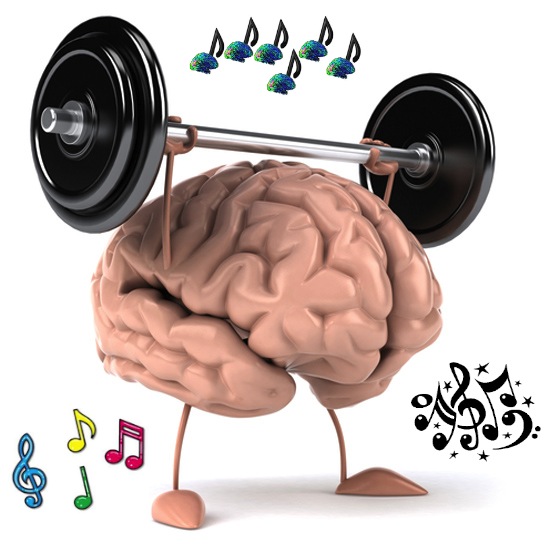Home Frank’s Blog Part 2a – Music and the Brain: Active Listening
Part 2a – Music and the Brain: Active Listening
Frank Fitzpatrick 12/10/2012

|
No time to read? Pick your language & press PLAY
Getting your Trinity Audio player ready...
|
“A song will outlive all sermons in the memory.” – Henry Giles
Music is like a mega-vitamin for the brain. Music can increase receptivity and retention of information, aid in the cognitive development of our children, shift our perceptions and emotional states, and inspire creativity and innovative thinking. Playing music, which we will cover in our next chapter, simultaneously engages more areas of the human brain than any other known activity. How do we tap into this wealth of neural activation? Let’s start with what I call Active Listening.
The key to Active Listening is to give your full attention to the musical experience, even if only for a couple minutes. The more closely we listen, the more we engage the different areas of our brain. The more we engage and the more senses we activate, the more strength a piece of music will have in positively affecting our physical, emotional and mental states, especially when we return to that same piece of music later.
Here are some tips for active listening. You can practice this exercise now by taking a couple minutes to listen to the musical selection below, or you can save these instructions for later, and chose an emotionally engaging but relaxing piece of music that you really resonate with. Review the suggestions before playing the music, because you will want to keep your eyes closed and avoid interruptions during your musical journey.
 • Prepare: Sit up tall (or lay down, if you prefer); turn off your phone; relax; let go of the stresses of the day
• Prepare: Sit up tall (or lay down, if you prefer); turn off your phone; relax; let go of the stresses of the day
• Tune in: Close your eyes and slow your breathing. Closing the eyes helps keep us focused and heightens the auditory senses.
• Embody: Take the music in with your breath and note where it resonates in your body. You can try placing one hand on your heart and another on your diaphragm. Engage other senses.
• Feel: How does the music move you emotionally? Tune into those feelings.
• Visualize: Do any images or colors come to mind? Let the music engage that creative source known as your imagination.
• Analyze: Pay attention to details in the music like melodic contour, musical form, harmonies, instrumentation and dynamics. This is called critical listening and can be a good exercise for the brain and for helping some of us to stay focused. It is important however, not to become judgmental or let the critical mind take away from the joy of listening.
• Take Pause: It is important to take a few moments at the end of the music, before opening your eyes, to let your system fully process the experience.
The following excerpt is will take you on a journey for about 2:30. It is a beautiful recording by Italian composer Ennio Morricone from his original score to The Mission.
“The Mission” – Ennio Morricone
[ca_audio url=”http://earthtones.org/wp-content/uploads/2012/09/11-The-Mission.mp3″]
After you open your eyes, take a moment to notice if anything has shifted for you. Sense if anything has shifted around you in the room.
There are numerous benefits from active listening – from psychological, to physical, to spiritual; far too many to cover in detail within this short blog. I have included a list of benefits below, and will return to some of them over the course of the next several weeks.
• Emotional: positively shifting our moods; helping create optimal mental and emotional states
• Physical: through rhythmic entrainment; improved circulation; slowing and regulating our breathing; and boosting our immune system
• Mental: improving memory and focus; stimulating brain activation; alleviating stress
• Social: building confidence and social skills; setting the mood for better connections
• Electrical: shifting our brain waves from Beta to more relaxed Alpha & Theta states
• Neurological: helping to reset and regulate our nervous system
• Spiritual: help us to be more present, increasing empathy; helping us achieve enhanced states of consciousness
• Energetic: helping us relax and recharge; helping motivate us and wake us up
• Chemical: increasing the release of dopamine, prolactin and serotonin
One thing to keep in mind is that music preferences are largely subjective. It is important that you choose music that personally relaxes or inspires and motivates you. Once you find that piece of music that helps you achieve your particular desired state, repeating the exercise daily for two to three weeks will significantly increase the beneficial effects and help you to shift more quickly when you return to the same selection later. Your personal playlist can become your personal toolkit for optimizing your mental and emotional state whenever you need it.
For more information on music’s effect on the brain, check out the wonderful PBS documentary The Music Instinct, featuring Daniel Levitin and Bobby McFerrin. I also recommend Dr. Levitin’s book, This Is Your Brain On Music.
View this article on Huffington Post.
I’m here to help YOU create a better world, inside and out.
Contact Me© 2025 Frank Fitzpatrick Website by AllHereIndia














